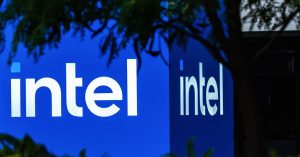In an era where financial services evolve constantly, one trend has become a lightning rod for debate: Buy-Now-Pay-Later. Love it or hate it, BNPL has taken the financial world by storm, promising convenience and flexibility to consumers and increased conversions for online businesses. But it also faces criticism about its creation of questionable debt for products of questionable value. The jury is still out on BNPL’s merits.
How can we be sure we aren’t simply locking people into a cycle of debt by a different name? Does BNPL actually help people in need or is it just a no-interest way for wealthy people to buy cheap consumer goods? So what’s the answer? As Marshal Lux and Jeremy Solomon make clear in the latest episode of The Pnyx debating BNPL: it is complicated.
Small Business Accelerant
BNPL models have become a lifeline for e-commerce merchants, offering a host of benefits. They contribute to higher cart conversion rates by reducing friction in the purchasing process. By providing customers with an alternative to upfront payments, BNPL services entice hesitant buyers to complete their transactions. Most importantly, this reduction in cart conversion friction disproportionately benefits small ecommerce businesses trying to scale by moving up market and offering higher ticket price items. This increase in conversions also translates into a boost in Average Order Value (AOV), as customers tend to buy more when they have the option to spread out their payments. For example, AfterPay reported that it delivered a 7.7x return on investment for their partnering SMBs in 2021.
Customer Convenience
Another advantage of BNPL is the convenience it offers consumers. These services allow individuals to make purchases without paying the full amount upfront, thus increasing their cash flow between pay periods. This feature is particularly helpful for unexpected expenses or when budget constraints make immediate payment challenging. In a survey Qualtrics conducted on behalf of CreditKarma, most of their respondents said they had used BNPL services more than twice, a decent measure of their satisfaction with the product. The most likely reason was that BNPL is convenient and not difficult to use. Some 80% of the respondents said that BNPL was somewhat or very easy to make a purchase.
Accelerating The Unnecessary
Of course, enticing hesitant buyers to purchase unnecessary goods is not inherently positive. What do people actually buy with BNPL? The data here is mixed, and different generations are using BNPL for different sized purchases and for different goods. For example, Gen X and Boomers are most likely to use BNPL to finance furniture over $500 and Gen z are most likely to use it to purchase apparel and footwear. These can each have benefits and costs, as people need clothing and financing high-ticket items is difficult without access to cheap credit, but BNPL also risks shrouding real costs and making certain goods appear more affordable than they are. Even when it comes to the ability to buy certain consumer non-durables (such as toilet paper, cleaning products, gasoline), the story is not a uniformly positive one. BNPL’s value may seem most obvious for these purchases, as they are goods people really need, but buying toilet paper in four easy installments speaks of a desperation that is not adequately or necessarily fairly addressed by BNPL models, said Marshall Lux on this recent episode of the fintech podcast The Pnyx.
Financial inclusion in Emerging Markets
One area of particular interest for BNPL is emerging markets. In emerging markets where traditional banking services are often limited, BNPL models can act as a catalyst for financial inclusion. These embedded financing options allow people to access credit where they previously could not and possibly when they can’t find it anywhere else in their financial lives. By increasing access to credit, BNPL here allows more people to participate in the economy and thus spurs economic growth.
But There Are Real Risks
All these positive aspects also bring with them significant risks.
One of the chief concerns our panelists debated in the episode of The Pnyx was the actual structure of the credit offering itself. Although BNPL can provide short-term benefits, frictionless access to credit risks encouraging impulsive spending and unsustainable debt. Some individuals may overlook the repayment terms and accumulate debt beyond their means simply by purchasing unnecessary goods on unfavorable terms. Responsible product design and comprehensive borrower education are essential to mitigate these risks and promote responsible financial behavior. Already, that same Qualtrics
XM
The other major concern our panelists discussed was the lack of coherent regulation in this sector. Without clear guidelines and regulations, BNPL could easily become a predatory practice that further locks vulnerable people into unnecessary and unsustainable debt. Regulators must stay on top of this phenomenon and ensure all customers reap the benefits of BNPL and none of the cons.
Perhaps the best protection from BNPL models creating unsustainable debt comes not from the government but from the banks. Banks would definitely de-risk from BNPL models that create high default rates. No one has an incentive in this model to lose money and that urge, although not perfect, may prove the best check on predatory lending.
The Necessary Nuance
The answer, as promised, is complicated. On balance, BNPL models can be a force for good, unlocking access to capital at the customer pain point. The convenience and flexibility they provide to consumers, coupled with the support they offer merchants, make them a powerful tool for boosting commerce.
However, BNPL also risks encouraging unnecessary spend and pushing the underserved further intro debt traps. As the BNPL industry continues to evolve, it will face justified scrutiny and challenges. Regulators must establish safeguards and ensure fair practices. While industry players need to prioritize responsible product design, consumer education, and transparency to prevent the potential pitfalls associated with uncontrolled borrowing. Ultimately, BNPL already has a clear use case in emerging markets, where it can be instrumental in bridging the financial inclusion gap and onboarding customers into the formal financial services ecosystem.
As for more mature markets like the United States, careful consideration and adaptation will be required by operators, and thereby investors, to strike a balance between the benefits and risks of BNPL financing. In the coming years, the BNPL model will undoubtedly face pressure to address regulatory concerns, enhance responsible borrowing practices, and adapt to changing consumer expectations. How it navigates these challenges will determine whether BNPL financing continues to thrive as a force for good in the financial world.
Read the full article here















